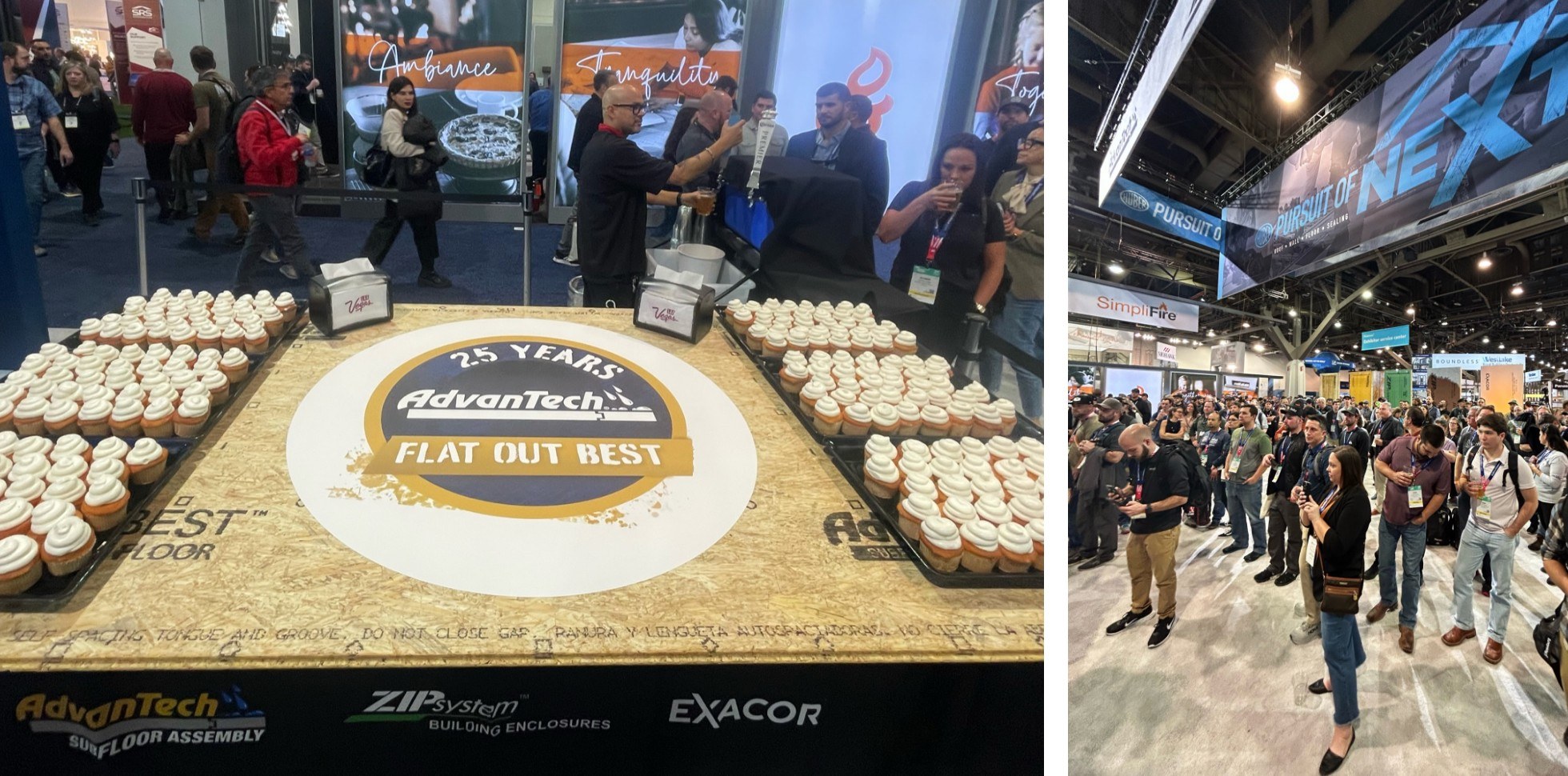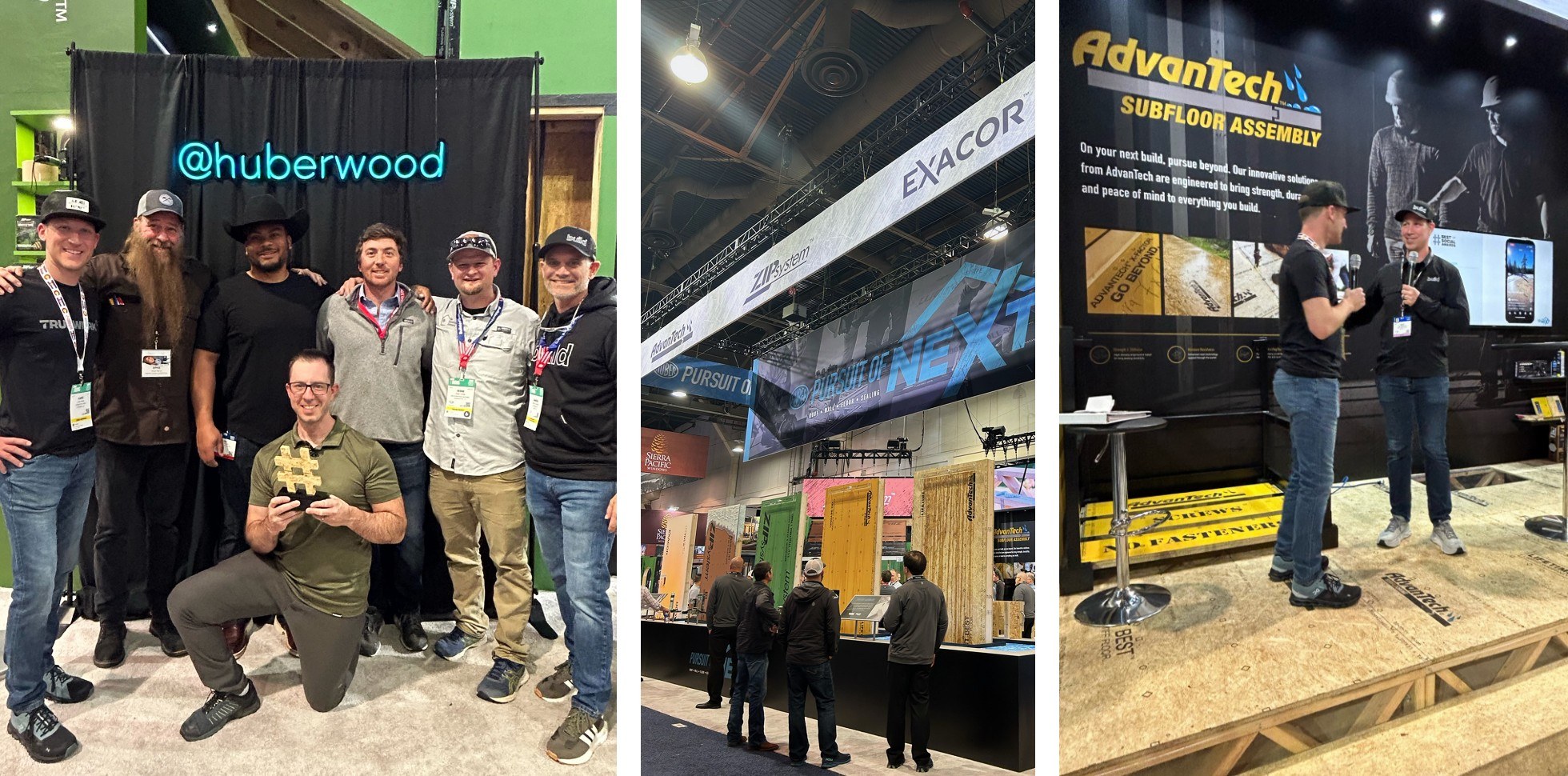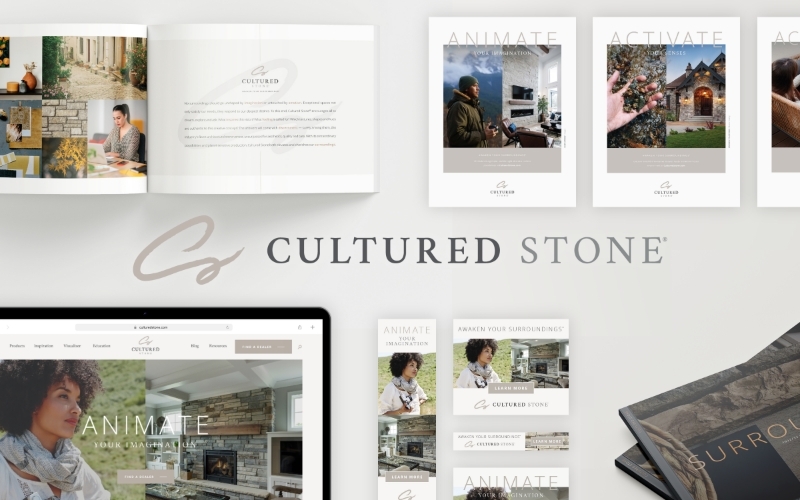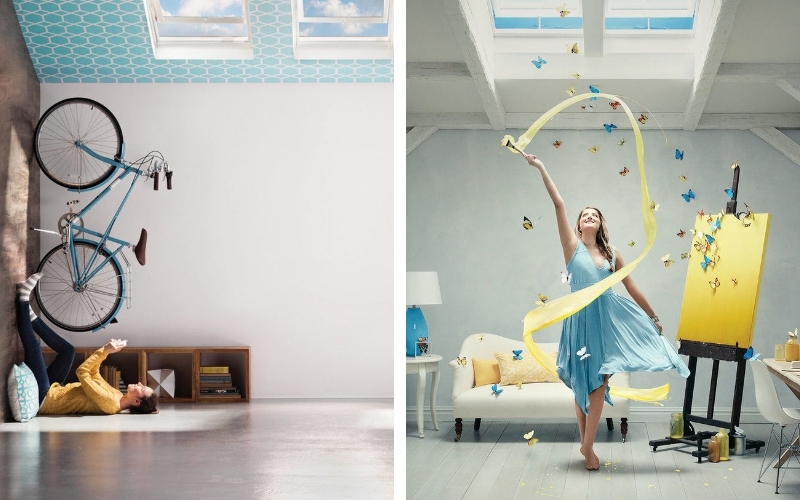Creative
Once upon a time, in a faraway land of rolling hills and scrubby plants, tucked beneath soaring mountain peaks and iconic rock formations, there was a great trade show trio. A fearless group of marketing and creative professionals traveled to the fabled NAHB International Builders’ Show, Kitchen & Bath Industry Show and SURFACES event to care for and connect with their homebuilding and remodeling clients. A curious creative director was among this group of agency gurus, and one day, he decided to walk the trade show floors in search of wildly creative brands.
As the art director-turned-creative director, photographer and filmmaker wandered the aisles, he contemplated the many physical installations of brand campaigns. There, in West Hall: a real-life clash of competitors assigned to adjacent booths! At the outdoor Show Village, bathed in desert sunlight: demonstration homes and shiny new products! But something was mostly missing from this amalgamation of industry titans and challengers:
Brand differentiation.
The inquisitive creative director kept his eyes peeled for personifications of unique propositions. Where were the brands zagging whenever their competitors zigged? Where were the brands courageous enough to take risks? Where were the marketing mavens who dared to be different?
Imagine his surprise when he realized that, save for the occasional wave, he was swimming in a sea of sameness (SOS!).
But why did this apparent dearth of brand differentiation leave the creative director not only bewildered but also gasping for air?
Brand differentiation could be a matter of success or failure.
Brand differentiation is, put simply, what earns audiences’ attention. It’s the secret sauce that turns your ho-hum hamburger into an institution. It’s the occultism that makes you original. It’s how you pry customers from the competition … and turn those customers into advocates for your brand.
Now, trade shows aren’t the be-all and end-all, but for many brands, they're a big deal. For Wray Ward’s clients in the home and building category, for example, the International Builders’ Show might be the best chance all year to connect with large numbers of customers and could-be customers in residential construction.
But here’s the catch: Standing out in the crowd may be the hardest part of trade show activations.
That’s why we encourage our clients to operate from a unique playbook. Unless you own your category, it isn’t enough to check the same interchangeable boxes as the competition, year after year.
What are examples of brands winning the trade show floor?
Wray Ward supports brands with everything from pre-show communication to booth design, influencer marketing tactics and post-show lead management. But the companies killing it in the trade show space deserve the lion’s share of the credit for doing it better than the competition.
Here are a handful of home and building brands making it work.
1. GE Appliances
First, let’s take a small step back in time: In 2022, my friends at GE Appliances won Best of Show for their IBS exhibit.
Since Thomas Edison patented his incandescent lamp design in 1880, innovation has been the driving force at GE. Sure, trade show exhibit design can’t hold a candle to electric light, but this effort was brilliant. Imagine glass jewelry display cases, each housing a vignette that represented a persona (e.g., persona A gravitates toward this clutch, bling and palette).
It was an effective and memorable way to illustrate the design language of GE Appliances’ CAFÉ line of distinct, customizable kitchen appliances.
2. Huber Engineered Woods
Now, take the folks at Huber Engineered Woods, manufacturer of ZIP System building enclosures and AdvanTech Subfloor Assembly. They’ve created a case study on how to do trade shows well. I like to attend their annual Best of Social Awards, designed to build camaraderie and show appreciation for the online building community. This year, they expanded their booth with 15 feet of carpet down the middle just to accommodate the huge crowd they drew.
Can you picture 400 people in one spot, every last one jacked about ZIP System and AdvanTech products? I’ve seen it. From emcee Matt Risinger (custom builder and host of “The Build Show”) to the award winners and bystanders, you can feel everyone’s chest swell, as if to say:
We’re architects. We’re builders. We’re making amazing things together. We aren’t just making structures — we’re making people’s homes.
You won’t see it on any collateral, but the underlying message is, “If you’re in this business and you care about your craft, you use these (ZIP System and AdvanTech) products.”
That isn’t a forced association. It’s as real as it gets.




